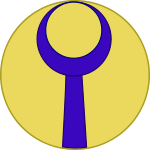
Petulantes
Encyclopedia

Auxilia palatina
Auxilia palatina were infantry units of the Late Roman army, first raised by Constantine I as part of the new field army he created in about 325....
of the Late Roman army
Late Roman army
The Late Roman army is the term used to denote the military forces of the Roman Empire from the accession of Emperor Diocletian in 284 until the Empire's definitive division into Eastern and Western halves in 395. A few decades afterwards, the Western army disintegrated as the Western empire...
.
History
The Petulantes were of Germanic origin, and it is possible they fought in the Battle of the Milvian Bridge for Emperor Constantine IConstantine I
Constantine the Great , also known as Constantine I or Saint Constantine, was Roman Emperor from 306 to 337. Well known for being the first Roman emperor to convert to Christianity, Constantine and co-Emperor Licinius issued the Edict of Milan in 313, which proclaimed religious tolerance of all...
(312). This assumption is based on the fact that Constantine had possibly had them portrayed on his triumphal arch in Rome
Arch of Constantine
The Arch of Constantine is a triumphal arch in Rome, situated between the Colosseum and the Palatine Hill. It was erected to commemorate Constantine I's victory over Maxentius at the Battle of Milvian Bridge on October 28, 312...
.
In the 4th century, the Petulantes were in the army of the Caesar
Caesar (title)
Caesar is a title of imperial character. It derives from the cognomen of Julius Caesar, the Roman dictator...
of the West Julian. The unit amounted to 500 men, but, in order to obtain a tactically valid unit, they were often united with the Celtae
Celtae
Celtae are a Canadian band based in Ottawa, who play neo-Celtic music. The band was founded by Nathan MacDonald of Cape Breton Island, and also includes Matt Holland of Summerside, Prince Edward Island and Tyree Lush of Gambo, Newfoundland and Labrador...
. As part of Julian's army, the Petulantes took part in the victorious Battle of Strasbourg
Battle of Strasbourg
The Battle of Strasbourg, also known as the Battle of Argentoratum, was fought in 357 between the Late Roman army under the Caesar Julian and the Alamanni tribal confederation led by the joint paramount king Chnodomar...
(357). When Julian, camped in Paris
Paris
Paris is the capital and largest city in France, situated on the river Seine, in northern France, at the heart of the Île-de-France region...
, received the order from his cousin the Emperor Constantius II
Constantius II
Constantius II , was Roman Emperor from 337 to 361. The second son of Constantine I and Fausta, he ascended to the throne with his brothers Constantine II and Constans upon their father's death....
to send some troops (including the Petulantes) to the east, the troops revolted, because Julian had promised to keep them near their families. One of the standard-bearers of the Petulantes, Maurus, put the crown on Julian's head, proclaiming him Augustus
Augustus (honorific)
Augustus , Latin for "majestic," "the increaser," or "venerable", was an Ancient Roman title, which was first held by Gaius Julius Caesar Augustus , and subsequently came to be considered one of the titles of what are now known as the Roman Emperors...
(361). Together with the Celtae, the Petulantes fought against the Alamanni
Alamanni
The Alamanni, Allemanni, or Alemanni were originally an alliance of Germanic tribes located around the upper Rhine river . One of the earliest references to them is the cognomen Alamannicus assumed by Roman Emperor Caracalla, who ruled the Roman Empire from 211 to 217 and claimed thereby to be...
near Sanctium, in Raetia
Raetia
Raetia was a province of the Roman Empire, named after the Rhaetian people. It was bounded on the west by the country of the Helvetii, on the east by Noricum, on the north by Vindelicia, on the west by Cisalpine Gaul and on south by Venetia et Histria...
.
In 365, the Augustus Senior of the west, Valentinian I
Valentinian I
Valentinian I , also known as Valentinian the Great, was Roman emperor from 364 to 375. Upon becoming emperor he made his brother Valens his co-emperor, giving him rule of the eastern provinces while Valentinian retained the west....
, and the Augustus Iunior of the east, Valens
Valens
Valens was the Eastern Roman Emperor from 364 to 378. He was given the eastern half of the empire by his brother Valentinian I after the latter's accession to the throne...
, divided the army in two parts, and it is possible that in this occasion the Petulantes were divided into two units, the seniores and the iuniores. The Notitia Dignitatum
Notitia Dignitatum
The Notitia Dignitatum is a unique document of the Roman imperial chanceries. One of the very few surviving documents of Roman government, it details the administrative organisation of the eastern and western empires, listing several thousand offices from the imperial court down to the provincial...
, an early-5th century document, lists the Petulantes seniores among the auxilia palatina
Auxilia palatina
Auxilia palatina were infantry units of the Late Roman army, first raised by Constantine I as part of the new field army he created in about 325....
, the elite units, under the command of the magister peditum of the west. The same document gives the Petulantes iuniores under the command of the magister militum
Magister militum
Magister militum was a top-level military command used in the later Roman Empire, dating from the reign of Constantine. Used alone, the term referred to the senior military officer of the Empire...
per Illyricum
Praetorian prefecture of Illyricum
The praetorian prefecture of Illyricum was one of four praetorian prefectures into which the Late Roman Empire was divided.The administrative centre of the prefecture was Sirmium , and, after 379, Thessalonica...
, with a different shield pattern.
Primary sources
- Ammianus MarcellinusAmmianus MarcellinusAmmianus Marcellinus was a fourth-century Roman historian. He wrote the penultimate major historical account surviving from Antiquity...
, Res Gestae Libri XXXI - Notitia DignitatumNotitia DignitatumThe Notitia Dignitatum is a unique document of the Roman imperial chanceries. One of the very few surviving documents of Roman government, it details the administrative organisation of the eastern and western empires, listing several thousand offices from the imperial court down to the provincial...

